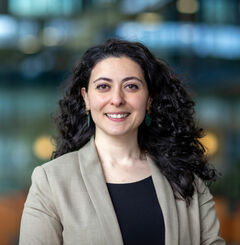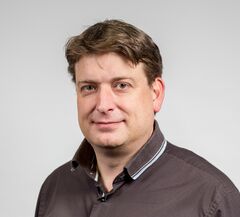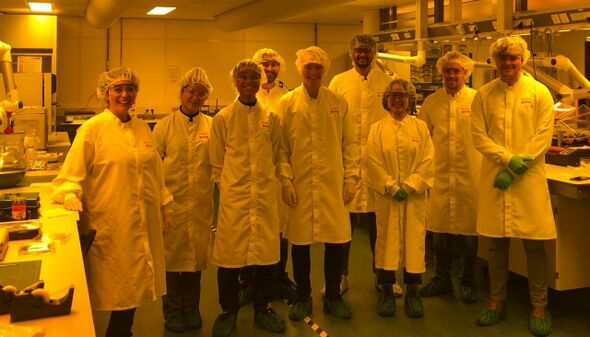“Questions of students we answer with a counter-question”
How do you apply Challenge Based Learning in your teaching? Burcu Gumuscu Sefunc and Hans Wyss of respectively Biomedical Engineering and Mechanical Engineering decided to join forces and set up a new course together, that would be available for students from different departments. “The more students from different departments start taking the course, the greater variety of approaches they bring and the more ‘color’ the course gets.”
With thoughts of the Bachelor College 2.0 and the university's wish to expand its Challenge Based Learning (CBL), Burcu Gumuscu Sefunc, assistant professor at Biomedical Engineering, decided that she too would set up a new CBL course with the help of the TU/e education support program. “I wanted to do something related to microdevices, like lab-on-a-chip devices. My research line is highly associated with these microdevices and I noticed that the interest of students in the field is rapidly growing as there are more and more research groups at TU/e raising interest in this technology. When I started setting up the new course, it turned out that an existing course at the Department of Mechanical Engineering was already covering a lot of the material I had in mind.”
The team behind that master's course, Microfluidics-put-to-work, includes Hans Wyss, associate professor. The course itself had just won the accolade 'best course of the third quartile' at ME. “The best time to stop is when you're at the peak,” says Wyss jovially. He was actually already looking into revising the course when Wyss and Gumuscu Sefunc crossed paths. So he got on board with her CBL proposal to set up a course for students from various departments.
Practical component
The course led by Wyss already had a significant practical component, but it was set up to guide students through particular steps towards pre-determined results. The new Lab on a Chip Microdevices CBL course is fundamentally different in this respect. It's more open-ended, explains Wyss. “Every week students are given assignments as they would if they were working for industry. So a fictitious customer might bring along a design for a microfluidic chip and want a particular metal to be used in its manufacture. This would require the students to assess the possibilities offered by the material and how it could be used to open channels so that a certain volume flow can be achieved.”
The assignments don’t have one right answer, there may be multiple good solutions, explains Gumuscu Sefunc. “In the practical sessions, students learn from each other, as all of them present their solutions. But, the teachers also keep an eye on definitely wrong answers and correct them on the spot, so that everyone can learn from them.” Aside from that, the lecturers aim to answer as few questions as possible, as a requirement of CBL – except in the theoretical part of the course. Gumuscu Sefunc: “If students ask a question, we answer it with another question. In the first few weeks they amass a pile of questions and can't help thinking, what is going on here? But they get used to it.”
Surprises
This way of teaching can also give the lecturers some surprises, Wyss says. “Students sometimes present us with a design and we think, wow, would that really be possible? It's even happened that they've come up with an idea that was similar to one for which a patent was recently filed by some of our colleagues. There was no way they could have known about that.” Equally surprising are some of the students’ requests when it comes to logistic challenges that arise for the project part of the course, says Gumuscu Sefunc. “Students ask for speakers, ultrasonic baths, lab shakers, or some other materials we hadn't envisaged to be used in their project. We try to facilitate them where we can, but sometimes they request really unusual things.”
As well as their weekly challenges, the students also undertake a large project for a real company. To arrange this, Gumuscu Sefunc visited the High Tech Campus, to ask companies whether they were encountering any problems that would benefit from a fresh pair of eyes. “A project from a real company is useful for students. Even if they can't find a solution to the problem, it gives them an idea of the issues being tackled in industry.” It also shows, she says, that companies don't only produce a product, they also research how they can solve certain problems.
Industry
Students are currently working on a project for Emultech, a company working on creating microspheres composed of several components, for use in the pharmaceutical industry for example. The case tackled by students on the pilot involved keeping droplets within other droplets stable. “Although we did have to simplify that case,” says Wyss. “Students found it complicated enough simply creating the droplets using Emultech's method. So the added work of answering the question was a step too far. They did succeed in producing a good analysis though, which the company found useful.”
Droplets within droplets and a Lab on a Chip Microdevices may well sound highly specific, but for the current 25 students of Mechanical Engineering, Biomedical Engineering, and Applied Physics this course is easy to follow. Also students from other departments are very welcome, says Gumuscu Sefunc. “One of the reasons we wanted to set up this CBL course was to make the course material available to more students. The more students from different departments start taking the course, the greater variety of approaches they bring and the more ‘color’ the course gets. We're all in favor of that.”
![[Translate to English:]](/fileadmin/_processed_/b/6/csm_vraagtekens_iStock_6807b6e154.jpg)




Discussion